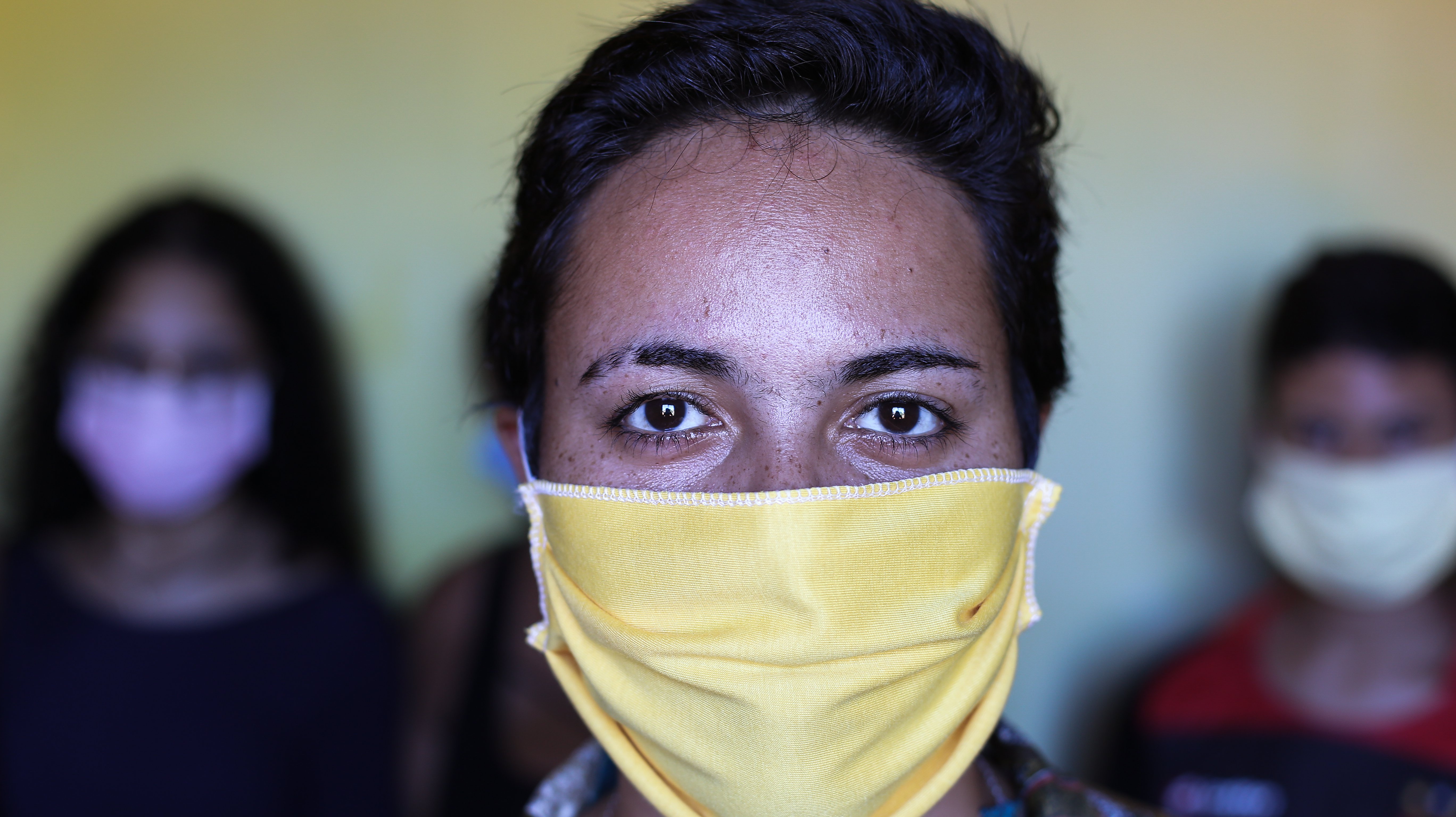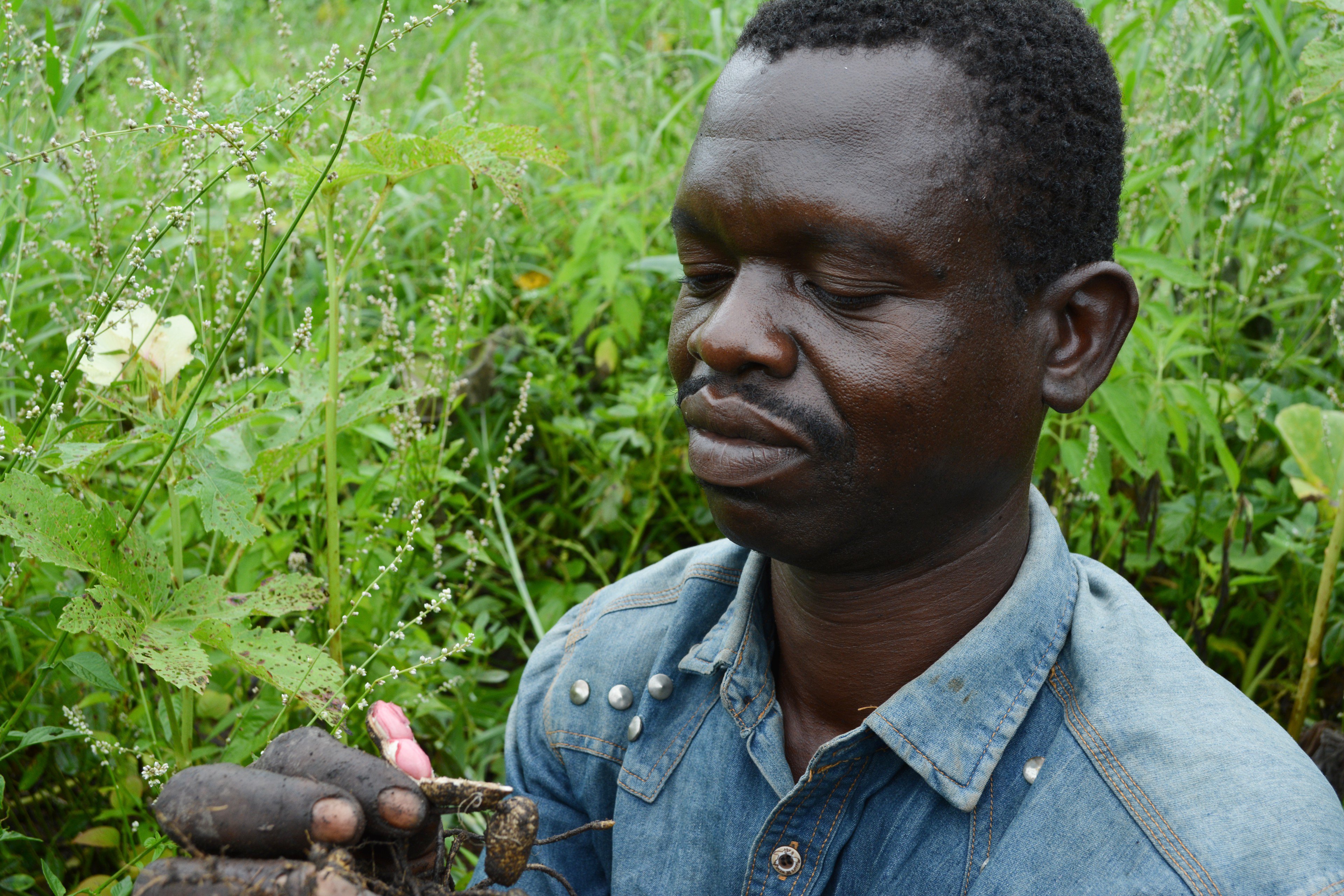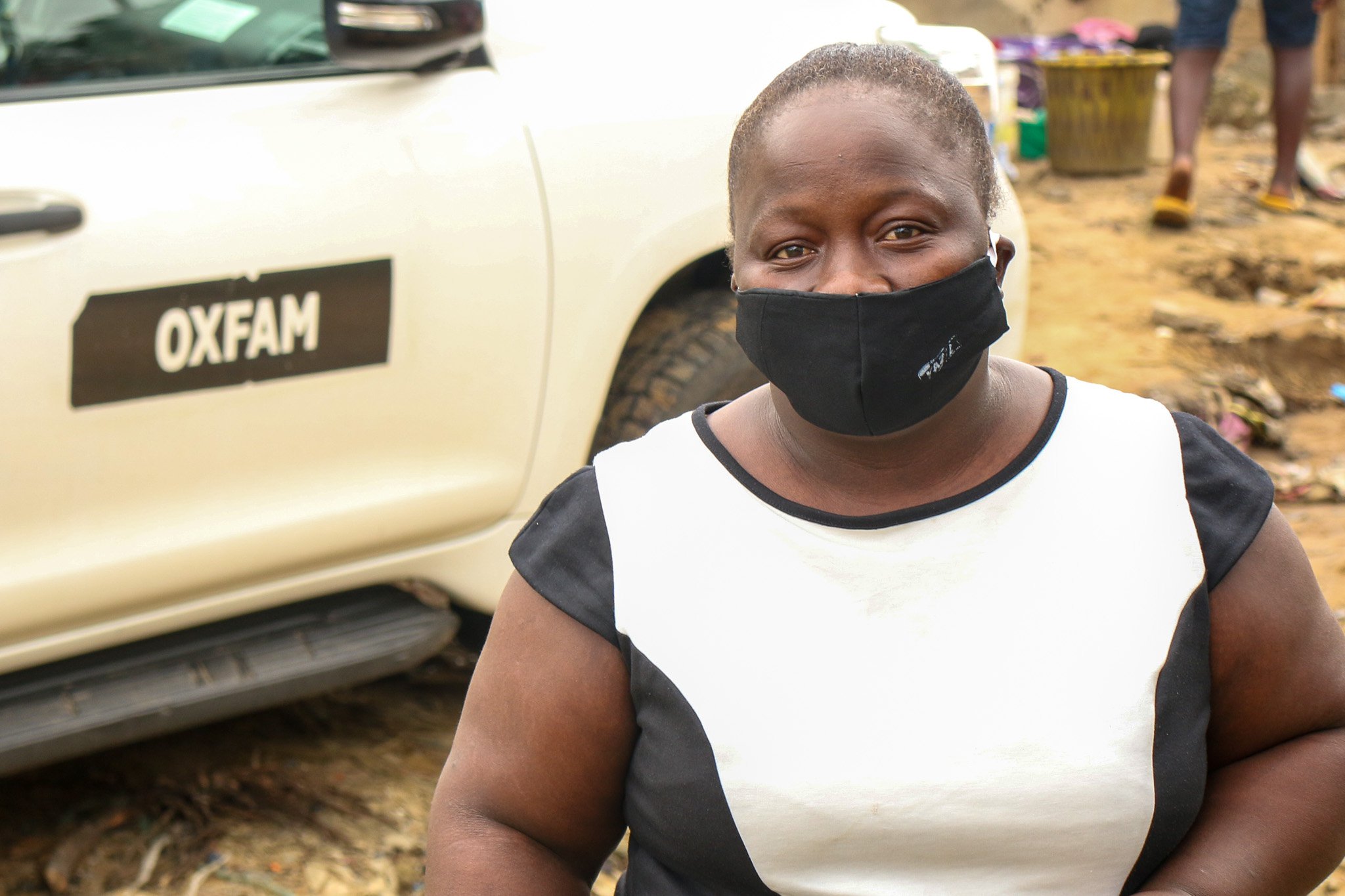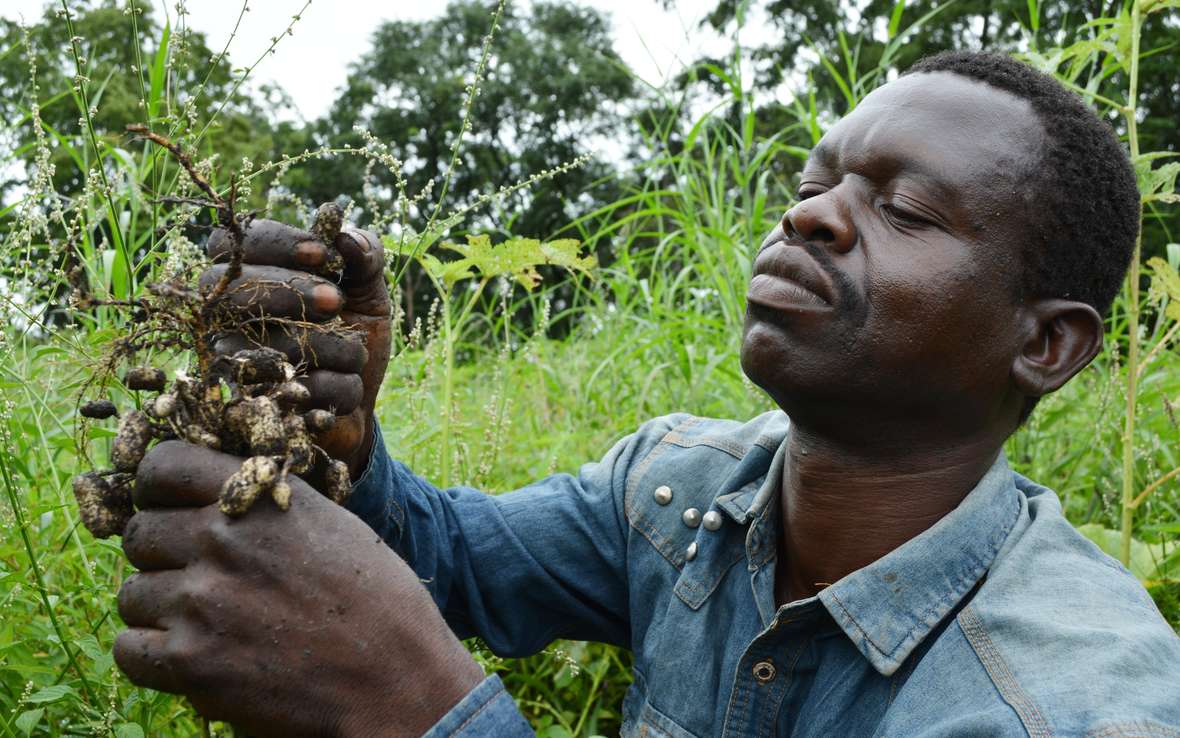Meet the faces behind the statistics on the pandemic-related hunger crisis
COVID-19 has uprooted our food systems, changing what and how people eat—and whether they eat at all. Millions have been pushed into hunger. In July, we reported that without action, 12,000 people are at risk of dying every day from hunger linked to the coronavirus.
The numbers can seem overwhelming, but behind them are people struggling to survive. Meet five of them here, and learn how you can support Oxfam in working with communities to overcome food insecurity.
Mosammat Rabeya Begum, Bangladesh

Mosammat Rabeya Begum is the president of a food bank in Katlamari, Bangladesh. Every month, the 60 women members of the food bank—which is supported by Oxfam and SKS Foundation—each deposit 1-2 kilograms of rice to the bank. Together, the group saves about 60 kilograms a month (about 132 pounds of rice), ensuring that in lean months—such as what they’re experiencing during this pandemic—they will be able to dip into their reserves.
“Each year we work for six months, and the rest of the year we cannot get any work due to floods and other disasters,” Begum says. “In those times, we face acute food and nutritional crises.”
The women put aside a handful of rice before cooking each meal, and that small act every day has added up to something huge: independence. Previously, families who ran out of food borrowed money from others, incurring interest on the loans. Now members of the food bank can simply borrow from the communal pot.
Debora, Brazil

Like many around the world, the pandemic has completely altered Debora’s life. She and her partner live in a shanty town on the outskirts of Recife in northeast Brazil. Both are both unemployed and reliant on government aid. Debora, 26, is helping a collective distribute basic food baskets throughout her neighborhood. As a volunteer, she is in constant contact with other people who need a hand. The mother of two is also supporting her mother, who was laid off due to the pandemic.
The threat of eviction looms large, but the biggest issue her family faces is access to food. “The distribution of basic food baskets is not enough for all,” Debora says. While the assistance helps, it doesn’t last all month.
“Times were difficult before the pandemic, and worse now,” she says. And yet, the needs she observes around her fuel her desire to help others.
Marwan, Syria

Even before COVID-19 hit, four out of five Syrians lived below the poverty line, one of the consequences of an almost decade-long war. Now, the pandemic has amplified the crisis. Marwan, a farmer in Eastern Ghouta, and his family have continued to struggle since the spread of COVID-19 interrupted last season’s harvest.
“Two months ago, we started to feel the impact of the coronavirus crisis,” he says. “Our income was dwindling, and food prices continued to skyrocket. What we earned from last season’s harvest couldn’t cover my family’s basic expenses. … Purchasing new seeds, after prices have increased dramatically, was out of the question, and so, for us, preparing for next season’s harvest was out of reach.”
This summer, Marwan was one of 2,200 people in Eastern Ghouta who received chickens, tomato and eggplant seedlings, as well as cucumber and zucchini seeds. For Marwan, the seedlings and seeds have filled a crucial need. “Without them, our only option would have been to sell some of our land to survive,” he says.
Nabal Guipera, Central African Republic

Nabal Guipera, 33, is a farmer in Bambara in northwest Central African Republic. Even before the pandemic, farmers in his community were used to cutting back on meals in the sowing season between July and August.
But since the start of the pandemic, Guipera says farmers can no longer work in groups in the fields, which has reduced yields. With less money from sales, they can’t hire workers for other agricultural tasks, such as weeding. The father of eight says his family is down to eating once a day.
Guipera is part of an Oxfam agricultural group, nicknamed "The Liberator," that has received black-eyed peas and sesame seeds, as well as oxen to help with tilling. “If it rains enough, the harvest can help make up for the lack of food and seeds,” he says.
Bone Kortie, Liberia

Before the coronavirus outbreak, Bone Kortie, 43, sold milk in Paynesville, a suburb of Monrovia. Kortie was so well known for her goods that she earned the nickname “Cold Milk” from her regulars.
When COVID-19 hit, however, her business dried up. “People are afraid to buy the milk,” she says. She was losing so much money that she decided to stop selling it.
Now Kortie, a mother of eight, including three of her late sister’s children, are down to one meal a day—and on particularly bleak days, no meals. Those days are “no food days,” she says, describing one recent "no food day" when heavy rains preventing her from selling plastic for money.
Kortie has been selected as a participant in a social protection project funded by Oxfam and the Ministry of Foreign Affairs of Denmark that provides digital cash transfer to women and girls via mobile phone to help them meet basic needs. The cash transfers will ensure no more “no food days” for Kortie’s family.
